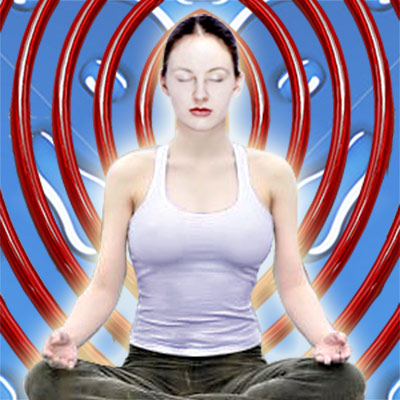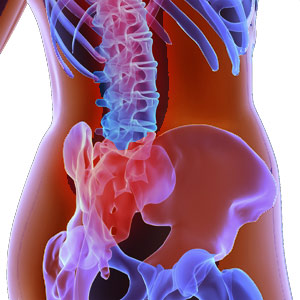Mindfulness Meditation

What happens to us in life is not within our control but we can change how we react.
Often practiced sitting with eyes closed, cross-legged on a cushion or on a chair, and with back straight, mindfulness meditation is a technique adapted from Buddhist Vipassana meditation by which one learns to be 'mindful'. Meditators of this tradition often start with short periods of ten minutes or so a day. With practice it becomes easier to keep the attention focused on breathing and subsequently extended into mindful awareness of thoughts, feelings and actions.
Does expecting the unexpected make the unexpected expected ?
Dr.Stephan McKenzie sums up like this - "Mindfulness is the practice of paying attention - knowing where our attention is and being able to choose where to direct it" in his book - Mindfulness for Life. Mindfulness is a form of eastern meditation that chips away the outside veneer and reveals the true - Self. Eastern philologists have attributed human suffering to attachment - to objects, thoughts and emotions. It is not a physical abstraction if you see the profound wisdom behind the thought that patience and equanimity are the first steps in tackling stress. This page attempts to show you the current theory and practice of 'Mindfulness Meditation' couched in simple easy-to-understand English.
The term 'mindfulness' is a western translation for the Buddhist term 'sati'. Anapanasati, or mindfulness of breathing is part of the Buddhist practice of insight-meditation and other meditational practices such as Zazen.
This ancient Buddhist practice has been adapted successfully to modern day living and it has sparked off therapy and techniques that could possibly help practitioners to cope with depression and other crises.
Mindfulness meditation is a great way to develop skills to improve deeper concentration and a host of hidden benefits on the side such as preventing the mind from getting lost in thoughts and feelings and to develop skills to improve quality of life.
A completely feasible practice
Mindfulness practice is simple and completely feasible. In fact just by sitting and doing nothing, a tremendous amount of doing is achieved.
Mindfulness meditation tries to achieve a mind that is stable and calm. And this calmness or harmony is achieved by a natural aspect of the mind. We are peaceful in our minds without struggling and our mind naturally feels content.
In this mindful state we are still intelligent. While in mindfulness meditation, the meditator is in deep meditation and still not asleep. This is not a meditative state where sense perceptions are denied.
While years ago mindfulness might have conjured up images of an orange-robed monk with a shaven head sitting quietly somewhere in a jungle cave, in this fast paced multi-tasking life, mindfulness is both used to take a vacation from the hectic lives and to manage ever more work at once. It is stimulation is a mindful manner.
Mindfulness meditation has become so popular that even a suburban soccer mom meditates to increase efficiency in her work, in dealing with her kids and watching what she eats and keeping her sanity.
Mindfulness in clinical therapy
Mindfulness has been applied to a number of clinical therapies including mindfulness-based stress reduction, mindfulness-based cognitive therapy, acceptance and commitment therapy and dialectical behavior therapy. This practice is good as supportive therapy and relaxation and more effective than traditional cognitive behavioral therapy. They reduce multiple negative dimensions of psychological stress including anxiety, depression and perceived stress, general distress.
For over 2500 years the teachings of Lord Buddha have helped to control thoughts and emotions especially during times of fear and loss. In the US, many have realized that Buddhist wisdom can be applied to practice and can help them work with personal challenges and loss.
Even for a non-Buddhist, the Buddhist traditions of wisdom and meditation are aimed to handle the challenges of life today.
Practicing mindfulness mediation
For practicing mindfulness meditation, we need to create the right environment. A good place to meditate, even if it be a small space, with less noise and disturbance - where the mind is away from provocations of anger and jealousy or other emotions. In a disturbed mind the exercise of performing mindfulness meditation will remain affected.
For a beginner, frequent meditation but for shorter periods of time, ten, fifteen or twenty minutes, is advised. It is meditation for ten minutes in the morning and ten minutes in the evening. After working with the mind, the meditator just has to 'stop' get up and go. Instead of allowing the mind to take us wherever it may, in mindfulness mediation, the meditator creates a personal sense of discipline. He/she needs to constantly remind themselves that it is work on the mind.
The Buddhist approach is that mind and body are connected. The energy flow is better if the body is erect and when bent, the flow is changed and this can affect the thought process. Since our posture affects our mind, we have to sit straight.
Some who need to use a chair for meditation should sit upright with their feet touching the ground. Those with meditation cushion should find a comfortable position with legs crossed and hands resting palm-down on thighs. The meditator should have a feeling of stability and strength. The basic principle is to sit upright erect posture. Shoulders and hips should be at level and spine should be stacked up. The posture should keep the meditator awake even though he/she is calm and if a dull or hazy feeling of falling asleep occurs, the meditator should check their posture.
The gaze should be downward focusing a couple of inches in front of the nose. The gaze should be soft and not staring. The goings on around should be ignored as the meditator tries to work with the mind.
When we are familiar with our minds, we learn to recognize the movement of our minds. If we go tangent from the mind, the object of meditation will bring us back. The whole feeling of breath is important and the breath should not be forced and should be natural. As we breathe in and out, our breath becomes relaxed.
Whatever are the thoughts, they should be kept under control and it is not the time to think about it. One has to be true and honest about oneself during each session. This does not mean that one has to be personal - one has to be as unbiased as possible.
Each mindfulness meditation is a journey of discovery to understand the basic truth of who we are. Speed of mind is important at the beginning. But according to traditional meditation, the mind does not have to be this way.
Mindfulness meditation practice is simple and completely feasible. And here we are experiencing life directly by sitting and doing nothing.
Myths about mindfulness meditation
This type of meditation is used in the US to help soldiers deal with post traumatic stress disorders. Assisting school children with attention difficulties and bringing stress relief are other areas where this is used.
However, there is some amount of confusion about mindfulness meditation and the four common misunderstanding are:
All Buddhists practice mindfulness meditation: The fact is that majority of Buddhists, past and present have never performed regular meditation practice. Mindfulness meditation was mostly practiced by monks and nuns and not the average Buddhist layman.
Mindfulness is always good for you: Mindfulness is supposed to have mental and physical health benefits including stress reduction. But there could be dangerous psychological and physical effects as well. In some practices of mindfulness meditation, patients experience hallucinations, psychotic episodes and other mental trauma as well as nerve pain and similar physical impacts. These effects are more so if the practitioner has a pre-existing mental or physical condition. These risks can be minimized, when practiced under the guidance of an instructor.
Mindfulness has always been used for self-improvement: One of the hottest present day uses of mindfulness meditation is not to prevent a break in one's meditation but to take it. For instance, books, articles, websites promote the idea of mindfulness and it is used to overcome sexual dysfunction and increase awareness of bodily pleasures. Mindful parenting, mindful work, mindful eating, mindful sports and other activities and other such newer applications of mindfulness are available. Whereas, in Buddhism, mindfulness was typically used to create detachment and to help achieve nirvana or salvation. In its present context, mindfulness has been reoriented to benefits the needs of today's seekers.
All mindfulness practitioners are Buddhist: Although it is true that Buddhism was the originating source for mindfulness, a number of Christians, Jews, Muslims and atheists practice mindfulness. Today's mindfulness has been promoted by scientists, doctors, psychologists and others with a secular role in society.
Short mindfulness exercises
These can be incorporated into our day to day lives even if we are not keen on formal meditation.
Two mindful bites
This is an attempt to try mindful eating for the first two bites of any meal or snack instead of attempting to do mindful eating all the time. In the first two bites, you pay attention to the sensory experiences, the texture, taste, smell, and appearance of food and the sounds. This should be done in an experiencing way and not evaluative way.
What one breath feels like ?
Try paying attention to ones breath and how it feels like. This is to feel the sensation of one breath flowing into and out of our body. The sensations in the nostrils, shoulders, rib cage and belly etc should be felt.
Instead of checking email all the time, take a mindful moment and give your brain a break.
After checking email in the five minutes between work, spend a few seconds watching out of your window and watch the leaves flutter on the big trees across the street. Using mindfulness, give your brain a break rather than filling up every space by automatically reaching to check emails.
Mindfulness meditation allows us to identify, tolerate and reduce difficult, painful and even frightening thoughts, feelings and sensations. It is in a way, saying 'yes' to life and seeing how life suddenly starts working for us rather than against us. Let us navigate the winds of change and stresses in life with mindfulness meditation.
Top of the Page: Mindfulness Meditation
Tags:#mindfulness meditation #mindfulness #mindfulness training #mindfulness exercises
Mind Body Wellness Tips
Mindfulness Meditation
Acupuncture Point
Right Brain Exercises
Homeopathy
Hypnosis Quit Smoking
Chinese Herbal Remedies
Reflexology
Reiki Therapy
Magnetic Therapy
Chromotherapy
Other health topics in TargetWoman Women Health section:
General Women Health

Women Health Tips - Women Health - key to understanding your health ...
Cardiac Care
Women's Heart Attack Symptoms - Identify heart problems...
Skin Diseases
Stress Hives - Red itchy spots ...
Women Disorders
Endocrine Disorder - Play a key role in overall wellbeing ...
Women's Reproductive Health
Testosterone Cream for Women - Hormone replacement option ...
Pregnancy
Pregnancy - Regulate your lifestyle to accommodate the needs of pregnancy ...
Head and Face
Sinus Infection - Nearly 1 of every 7 Americans suffer from ....
Women and Bone Care

Slipped Disc - Prevent injury, reduce pain ...
Menstrual Disorders
Enlarged Uterus - Uterus larger than normal size ...
Female Urinary Problems
Bladder Problems in Women - Treatable and curable ...
Gastrointestinal Disorders
Causes of Stomach Ulcers - Burning feeling in the gut ...
Respiratory Disorders
Lung function Test - How well do you breathe ...
Sleep Management

Insomnia and Weight Gain - Sleep it off ...
Psychological Disorders in Women
Mood swings and women - Not going crazy ...
Supplements for Women
Women's Vitamins - Wellness needs...
Natural Remedies

Natural Diuretic - Flush out toxins ...
Alternative Therapy
Acupuncture Point - Feel the pins and needles ...
Top of the Page: Mindfulness Meditation
Popularity Index: 101,049

